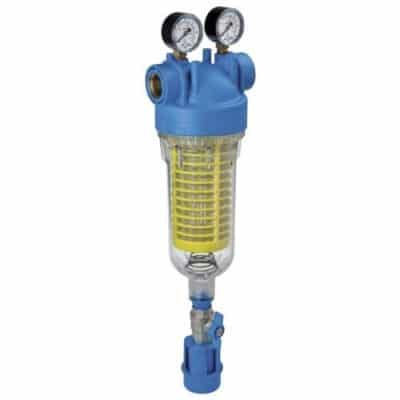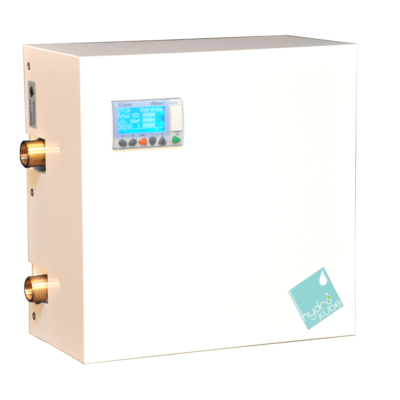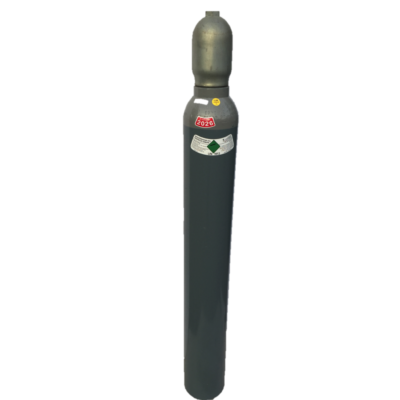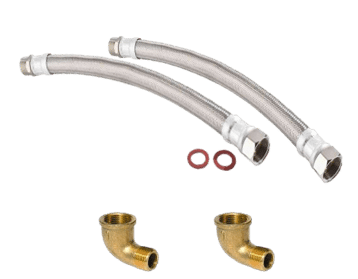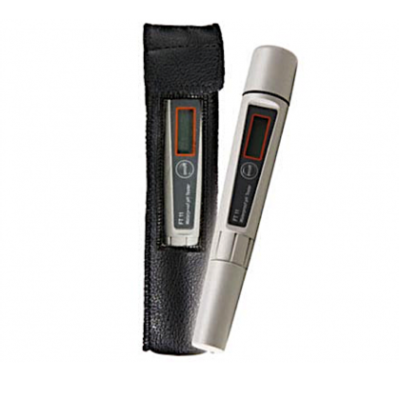Principles of CO2 treatment
CO2 treatment
CO2 gas (carbon dioxide) exists naturally. It is naturally present in sparkling water, for example. More information on CO2 can be found in our FAQs.
The Hydrokube CO2 softener injects CO2 proportionally into your water system. It then dissolves the limescale in the water and transforms it into calcium bicarbonate, which is soluble in water.
This calcium bicarbonate is used in food (E290) as an acidity regulator and stabilizer, and in medicine to regulate cardiac pressure.
Next, we’ll explain the Hydrokube treatment principle in more detail. That’s why it’s important to explain what scaling is and how it occurs. It’s not easy to explain, but it makes a lot of sense when you consider that it’s all a question of balance between the ions present in the water.
Scaling
Scaling is the formation of calcium carbonate (and, to a lesser extent, magnesium carbonate). However, calcium carbonate, or limestone, (chemical formula CaCO3) can only form if certain conditions are met. Consequently, the reaction, visualized in the formula below, moves to the right (scaling) or stays to the left (dissolving limestone) depending on these conditions.
To have scaling (limescale), you need:
- a sufficiently high concentration of both reagents: Ca2+ and HCO32- and
- low CO2 concentration.
Limescale is not dissolved in water (see chemical formula). Therefore, these waters, called hard waters, will tend to produce deposits leading to the formation of crystals at the solid-liquid interface. These waters thus cause scaling, for example in homes.
Conversely, if the Ca2+ and HCO3 2- reactants are in low concentration in the water or if the water is rich in CO2, the reaction shifts to the left and will tend to dissolve limescale. The limescale is replaced by calcium bicarbonate.
CO2 prevents limescale formation
Hard tap water contains high levels of calcium ions (Ca2+). If we want to prevent the formation of limescale, CaCO3 , or dissolve it. As explained in the previous paragraph, you need to act by increasing the CO2 concentration. The reaction moves to the left and will tend to dissolve the limestone. The hydrokube is based on this principle of CO2 injection. TheCalcium bicarbonate has the particularity of existing only in a dissolved state in water! The balance is maintained by CO2 mixed with water. Calcium (and Magnesium) is always present in the water (See water hardness measurement).
In reality, there is a CO2 concentration that will guarantee the total treatment of limescale and thus the balance of the reaction. The CO2 content has an influence on the pH. We can conclude that for a given mineralization, there is a pH value that corresponds to the target value to ensure the total treatment of limescale.
If the concentration of CO2 dissolved in water is higher than this equilibrium concentration, the excess CO2 can dissolve limescale, CaCO3. But it can also always prevent its formation.
Conclusion
T “his is therefore the principle on which the CO2 injection device is based. This principle is entirely consistent with water chemistry and the calco-carbonic reactions that” occur in it. It is therefore logical that “such a process prevents the formation of scale in sanitary installations for both” cold and hot water. This treatment offers the advantage of being very ecological, economical and keeps tap water safe for consumption.


